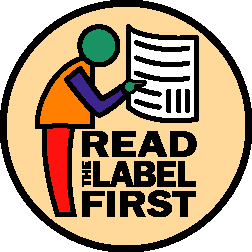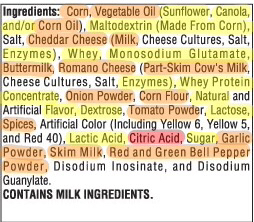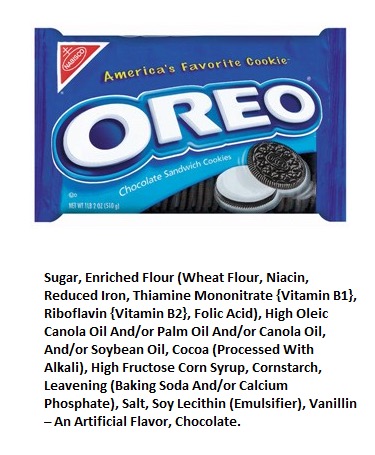Greetings Ninjas in Training!
And most special greetings and congratulations to you recent graduate ninjas! I’m sure you all look adorable in your weird square hats.

That’s me at my high school graduation – a fledgling ninja, still blindly navigating the waters of exercise-induced anaphylaxis. I wouldn’t face full-blown ninjahood until my sophomore year of college, but I still understand the alarming reality that is trying to eat in college without dying of food allergies… while also learning to semi-adult, making new friends, deciding which non-graded assignments are worth it (answer: if it’s chem, all of them), and not sleeping ever.
Thus, behold: as requested by the young Ninja Rose, a guide to starting college on the right food-allergic foot.
Option 1: Talk to Your School Nutritionist
Make an appointment with your school’s nutritionist as soon as possible. Send an email introducing yourself, and explain that you have some unusual, but serious, allergies. Give them a basic idea: what foods can you not have? Do you need to look at labels on pre-made sauces and seasonings?
If your diet is extremely limited and your home is far from college, ask if they are willing to converse via Skype – the earlier your meeting, the easier it will be to deal with roadblocks.
Sometimes, talking with the nutritionist is all you need to do! Some schools have excellent allergy systems, and with a little adapting, they will be able to help you too. You may have early access to menus of the day, access to labels, or even the ability to request customized safe meals.
Then again, your school nutritionist might be insane.
While some can be persuaded out of initial denial (see also: “You can’t be allergic to that, you’ll die!), nutritionists who also tell your nut-allergic roommate that her allergies aren’t real… probably aren’t going to be much help.
Nope, I’m not kidding.
That’s a thing that happened.
Have a little science speech prepared for the sane but misinformed nutritionist. If you find yourself stuck with one who denies you assistance even after being educated, on to option 2!
Option 2: Make Friends with Food Services
This is important regardless of whether or not your nutritionist is bonkers. It’s not even really an option, but calling it otherwise would have thrown off my header theme. These people are responsible for your life – they are far more likely to take your safety seriously if they have a friendly face to keep in mind while chopping up those lemons.
If you have the nutritionist on your side, chances are there is already a good allergy program in place, and the workers are educated on the basics. Since ninjas are probably a little different from anything they’ve encountered, it’s a good idea to talk to whoever is in charge of the kitchen and teach them a little about your food allergies.
Bonus points for bringing the staff allergy-free treats: it’s a great way to make friends and show you care about them as much as they care about you. (Make sure to find out about their allergies before bringing anything… my Head Chef was allergic to nuts, and he was so excited that I asked first. It’s the little things!)
If you don’t have the nutritionist on your side, things will be trickier. You’ll have to sort out things like early access to menus and labels all on your own.
Initially I worked out a procedure which allowed me to email the head of Food Services the night before with my choice from the menu, and I could ask anything I needed to about the sauces and mystery ingredients.
Unfortunately, this proved to be too complicated for my particular situation. They weren’t always able to find the labels, and were worried about companies changing ingredients in their mixes without notice. My school didn’t have a good allergy safety program, so the disorganization with regard to ingredients didn’t work in my favor. Making friends in Food Services did though – more on that later!
Option 3: Independent Eating
If you’re not able to work out a good protocol for the dining halls, it’s time to turn to self-sufficiency. Get in touch with your Student Health Services and explain that you’re going to need a car on campus and a room with a kitchen.
Trust me, you want a car – if you’re going to be making alllllll of your food, you don’t want to be hauling all of your groceries 10 blocks and then riding the bus for an hour every darn week.

You definitely want to invest in a vacuum sealer. These little miracles let you make big batches of food, then vacuum seal individual portions to eat later. You can keep them for actual months in the freezer. Read: you won’t have to cook during finals.
A kitchen will be nice for the actual making of food, but most likely you’ll *have* to eat in a dining hall for lunch – there won’t be time to go home and cook. You can keep some safe sandwich and wrap materials for when you need a portable lunch.
You may also want to invest in some collapsible food containers for more hearty, but still portable, dinners. College is about two things: learning and food. Meals are your social time, and you don’t want to spend them holed up in your kitchen cave!
Option 4: Independent Eating Redux
Sometimes, getting a kitchen and a car is not an option.
Maybe you’ve already been assigned a kitchenless underclass dorm, or maybe Student Health Services is just as useless as your nutritionist.

Whatever the case, you’re going to need the following:
1) Adoring parents
2) A vacuum sealer in the abode with aforementioned parents
3) A mini freezer and fridge (not a mini fridge with one of those hand-sized “freezer” flappy things, that’s not gonna cut it – you need a separate actual freezer)
4) A giant bowl and an electric tea kettle OR a microwave
5) Optional: a rice cooker
I just spent way too much time searching through my college pictures looking for my freezer-fridge in the background. How it remains elusive in the millions of photos I took is a mystery.
Anyways, when I was a sophomore, I was in a kitchenless suite. My allergies had escalated disastrously over the summer, and by the time I realized school food wasn’t an option, changing rooms wasn’t an option either. Not that I would have wanted to leave anyways – my suite was the party suite.

See what I mean? Man, we were wild.
Pretty sure that picture was taken from atop my elusive freezer-fridge, by the way.
And so, my brilliant mom came up with a solution: she cooked me large batches of food at home, vacuum sealed and froze them, and sent them to me by way of my dad, who happens to be a pilot and can hop on any plane for free.
I’d keep the food in my freezer, and heat it up either by microwave, or by letting the frozen food warm up in a bowl of hot water (courtesy of the electric tea kettle). I made rice a couple of times a week and kept leftovers in my fridge. It worked out splendidly.
I am of course, very lucky that my parents were both willing and able to do this for me. If they hadn’t, I would not have been able to stay at school out of state. Four for you, parents. You go, parents.

I do know of others with non-pilot parents who were able to make a similar procedure work sans free flights, so it’s still possible with other means of transport.
I’m also very lucky that I made friends with the Food Services people. Not only did they let me keep an overflow of my food in their industrial freezer (my tiny one could only hold so much), but they also let me heat up food in their kitchen when I wanted to eat dinner with my friends.
This was before I became sensitive to cross-contamination and airborne smells – once that came into play, I was restricted to heating and eating in my room. But for those who aren’t quite that sensitive, heating your own food up in the school’s kitchen is a great way to eat safe food with your friends, without having to figure out how to carry it or what to do with your empty containers if you’re going out after!
But what if my friends want to eat out, Lemon Ninja?
An excellent question – and a whole new topic. Check out some tips on how to survive college socializing (read: socializing that revolves around food) in this post.
So those are the basics – please feel welcome to ask questions in the comments section if you’d like to know more about how to succeed in college without really dying.

(Ok here’s the thing, I know nothing about How to Succeed in Business Without Really Trying, except that Harry Potter was in it. I could not find any pictures of Harry Potter graduating, so here’s a picture of Hermione instead.)
That’s all for now ninjalings.
Until next time, when life gives you lemons, RUN!
The Lemon Ninja
Special thanks to my friend Judith for retouching me like a celebrity in a Vogue shoot. Don’t I look beautiful?





























